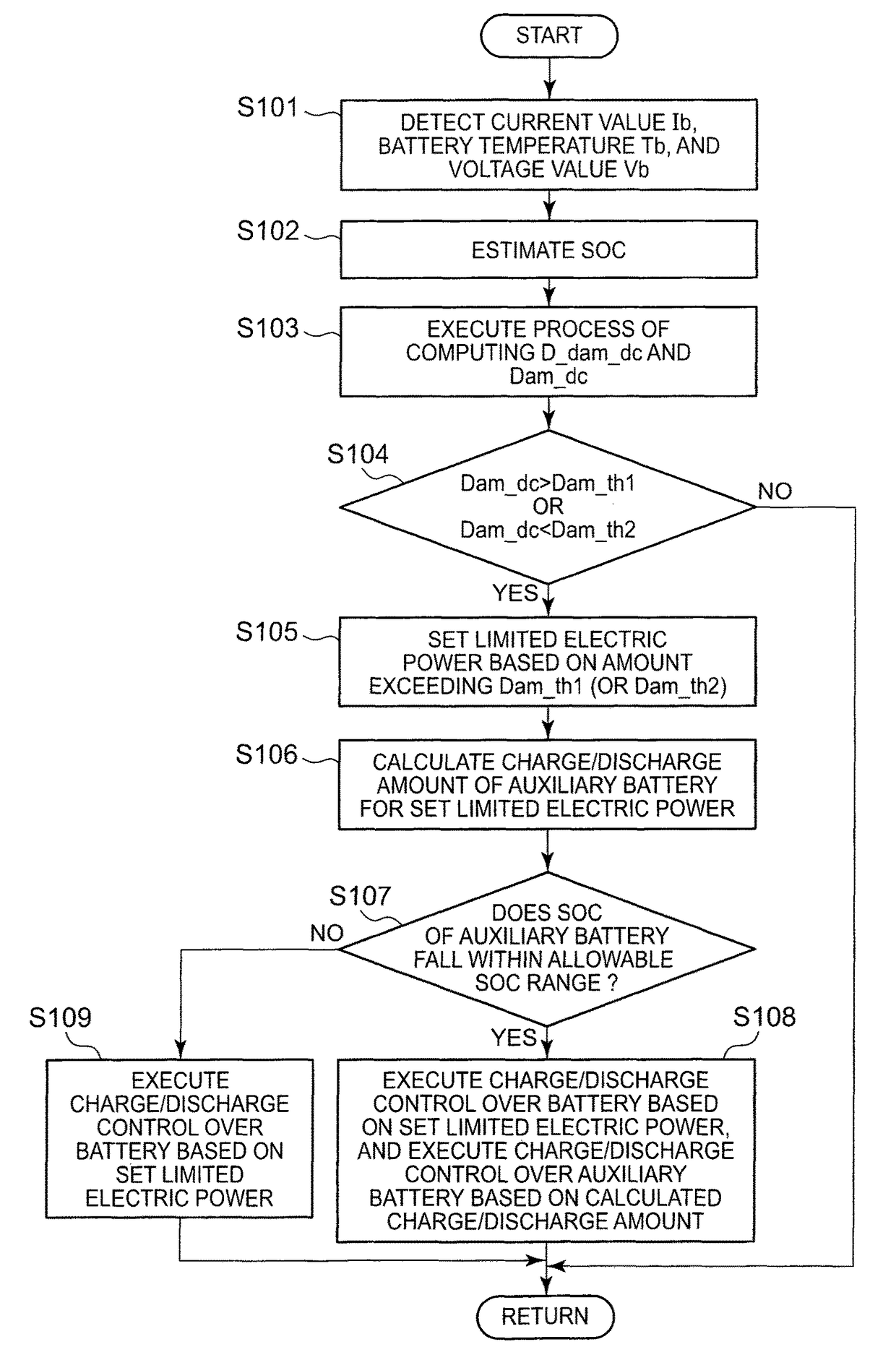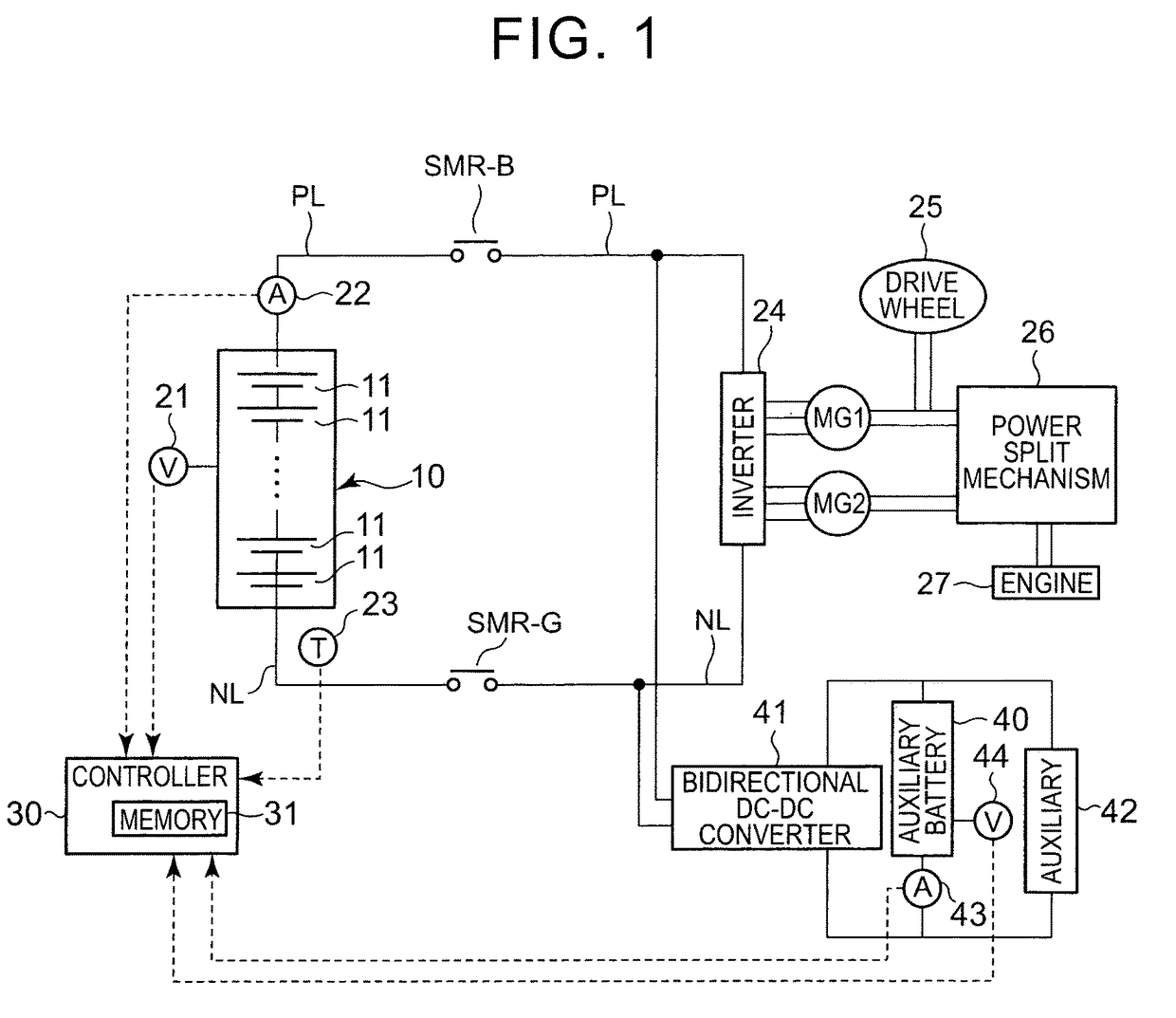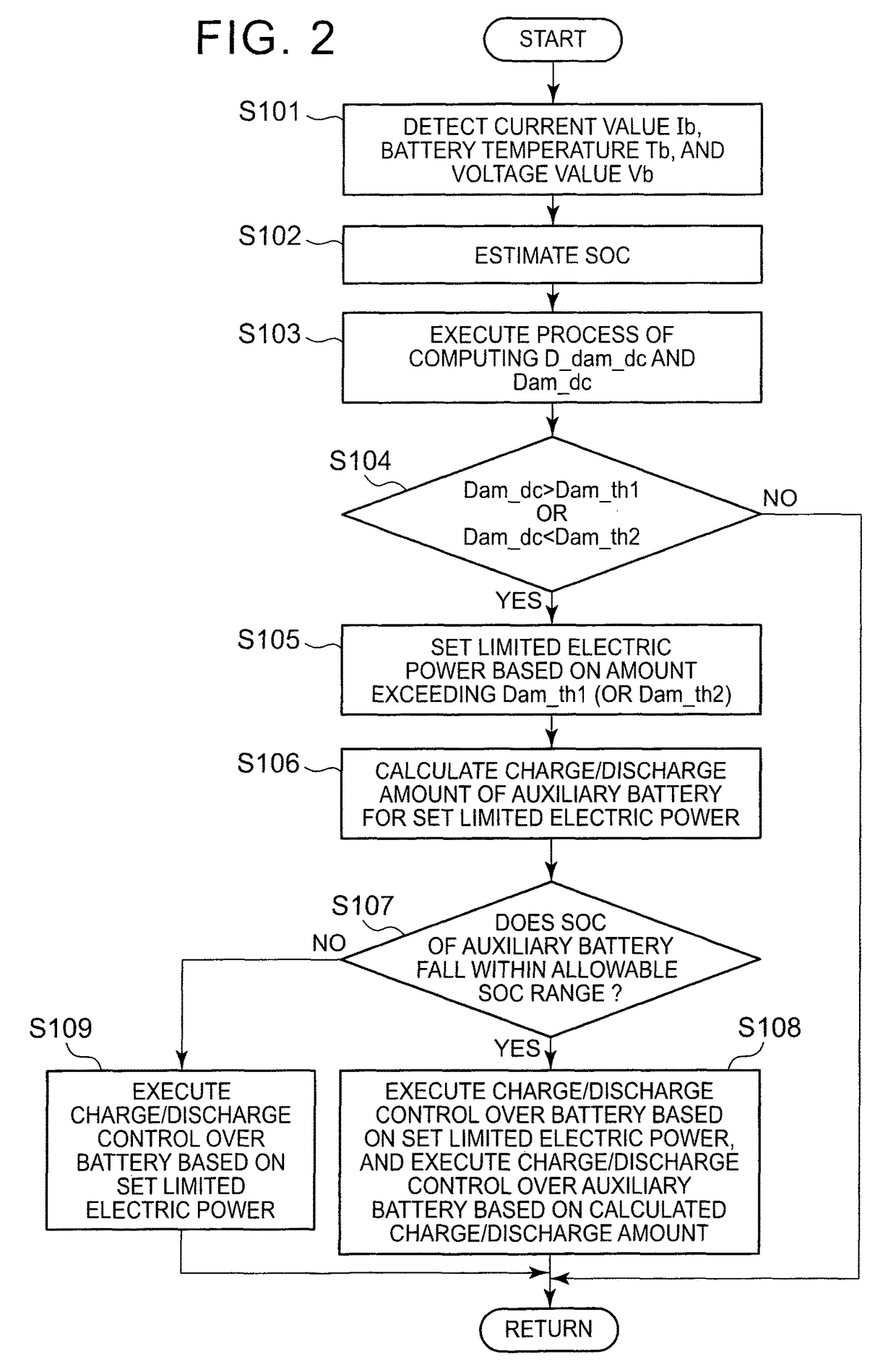Electrical storage system for vehicle
a technology for electric storage and vehicles, applied in the direction of electric energy management, electric devices, safety/protection circuits, etc., can solve the problems of fuel economy deterioration, energy efficiency decline, and insufficient output of batteries for vehicles, so as to suppress the decrease in allowable output power, reduce the allowable output power, and eliminate degradation
- Summary
- Abstract
- Description
- Claims
- Application Information
AI Technical Summary
Benefits of technology
Problems solved by technology
Method used
Image
Examples
first embodiment
[0033]Hereinafter, embodiments of the invention will be described. A first embodiment will be described
[0034]FIG. 1 is a view that shows the configuration of a battery system according to the present embodiment. The battery system according to the present embodiment may be mounted on a vehicle. The vehicle is a hybrid vehicle or an electric vehicle. The battery system shown in FIG. 1 is an example in which the battery system is mounted on the hybrid vehicle. The electric vehicle includes only a battery pack (described later) as a power source for propelling the vehicle.
[0035]A battery pack 10 is a main battery that supplies electric power for propelling the vehicle. The battery pack 10 includes a plurality of single cells 11 connected in series with each other. A secondary battery, such as a nickel-metal hydride battery and a lithium ion battery, may be used as each single cell 11. Instead of a secondary battery, an electric double layer capacitor may be used.
[0036]The number of the...
third embodiment
[0201]The battery pack 10 generates heat when charged or discharged, and the battery temperature Tb increases. It is known that battery degradation is accelerated when the battery temperature Tb increases to a high temperature, so it is required to appropriately control charge / discharge current. As in the case of the above-described third embodiment, charge / discharge currents of the battery pack 10 are also controlled in view of protection of current-carrying components. Therefore, an upper limit value of each of charge / discharge currents is set in advance, and, when charge current or discharge current that exceeds the upper limit current (overcurrent) flows through the battery pack 10, the controller 30 is able to execute charge / discharge control in which input electric power or output electric power is limited so as not to exceed the upper limit current.
[0202]Upper limit values of input and output powers (electric power excess thresholds) of the battery pack 10 may be obtained in ...
PUM
| Property | Measurement | Unit |
|---|---|---|
| electric power | aaaaa | aaaaa |
| output voltage | aaaaa | aaaaa |
| power | aaaaa | aaaaa |
Abstract
Description
Claims
Application Information
 Login to View More
Login to View More - R&D
- Intellectual Property
- Life Sciences
- Materials
- Tech Scout
- Unparalleled Data Quality
- Higher Quality Content
- 60% Fewer Hallucinations
Browse by: Latest US Patents, China's latest patents, Technical Efficacy Thesaurus, Application Domain, Technology Topic, Popular Technical Reports.
© 2025 PatSnap. All rights reserved.Legal|Privacy policy|Modern Slavery Act Transparency Statement|Sitemap|About US| Contact US: help@patsnap.com



